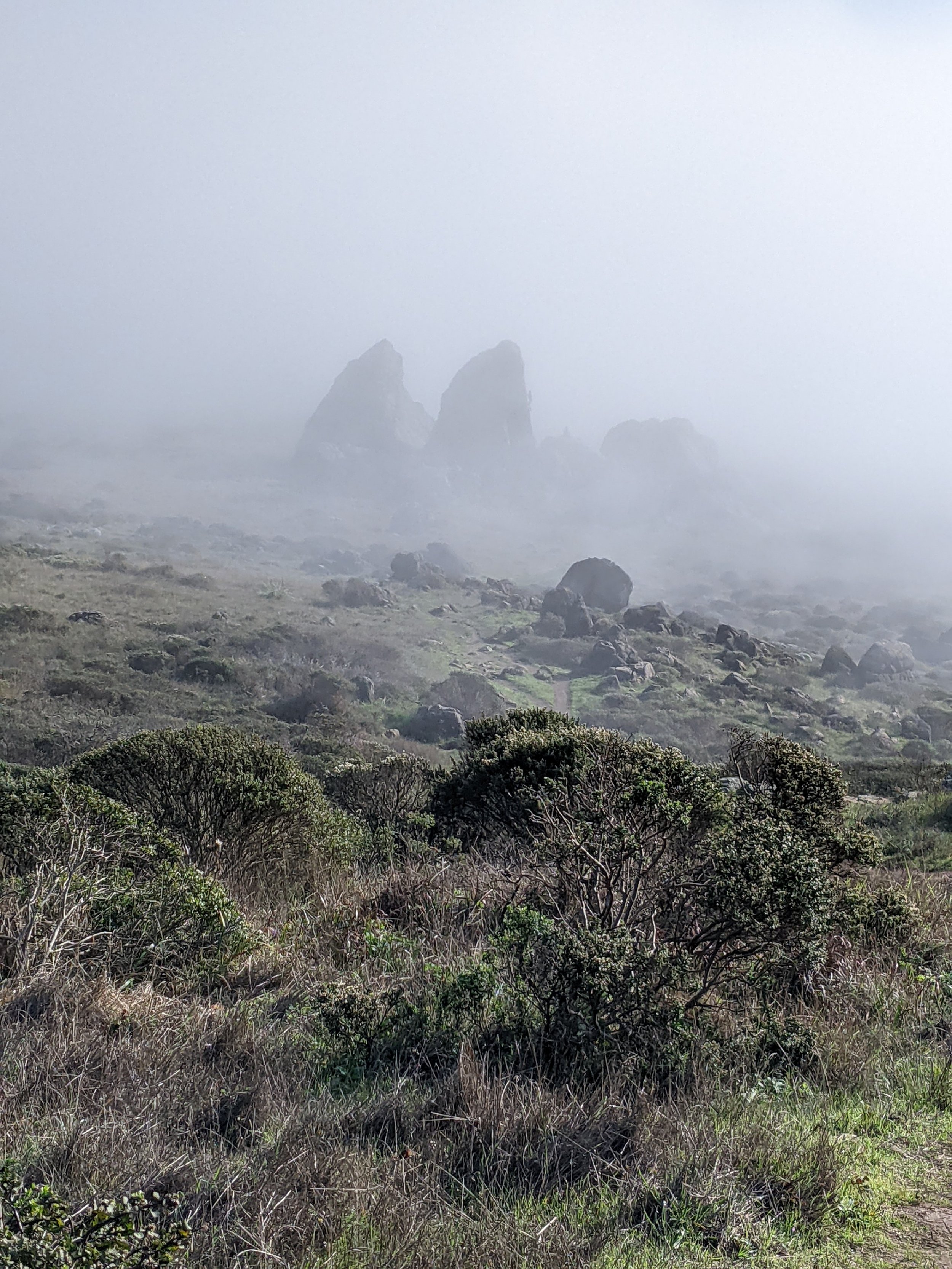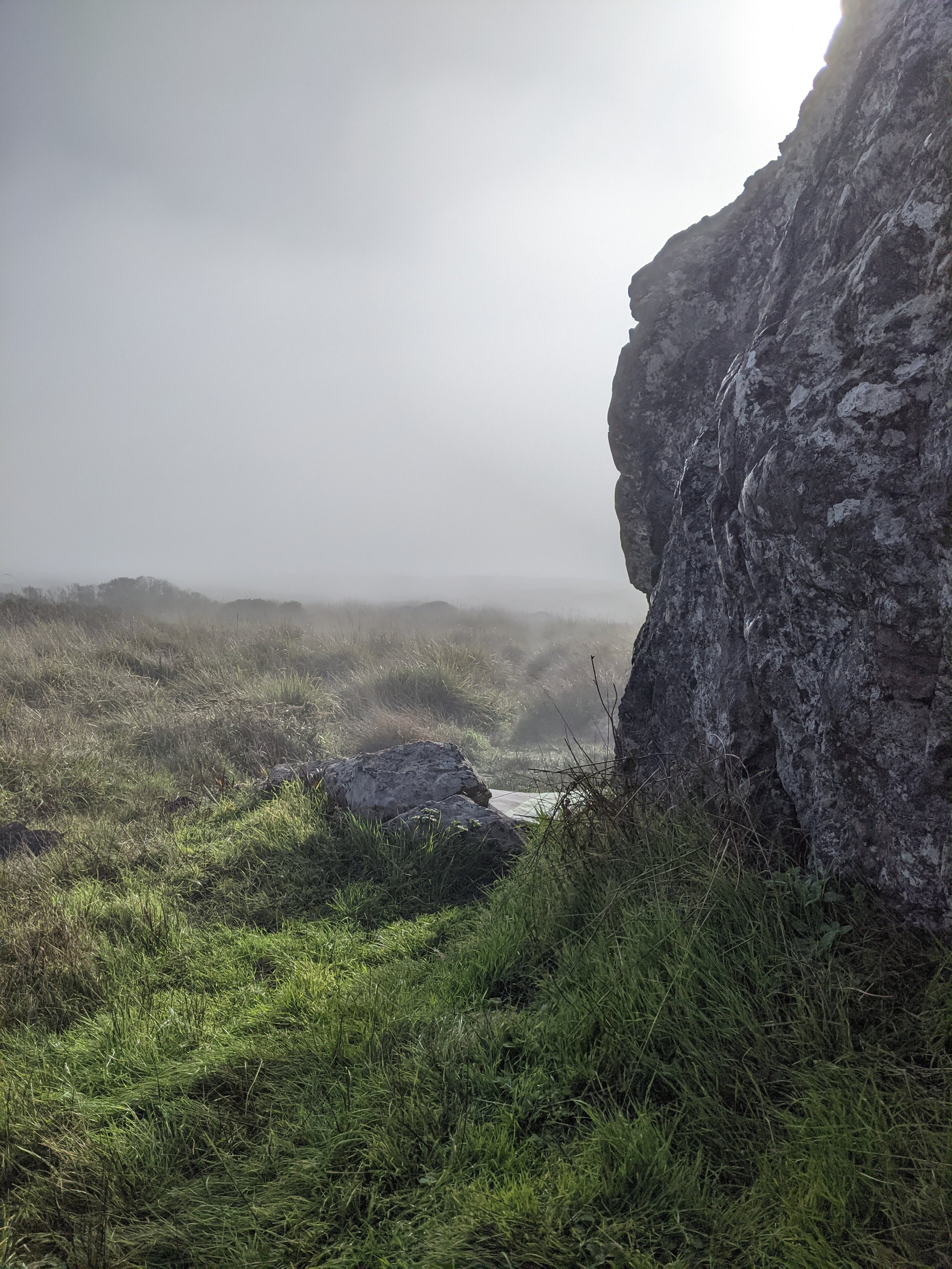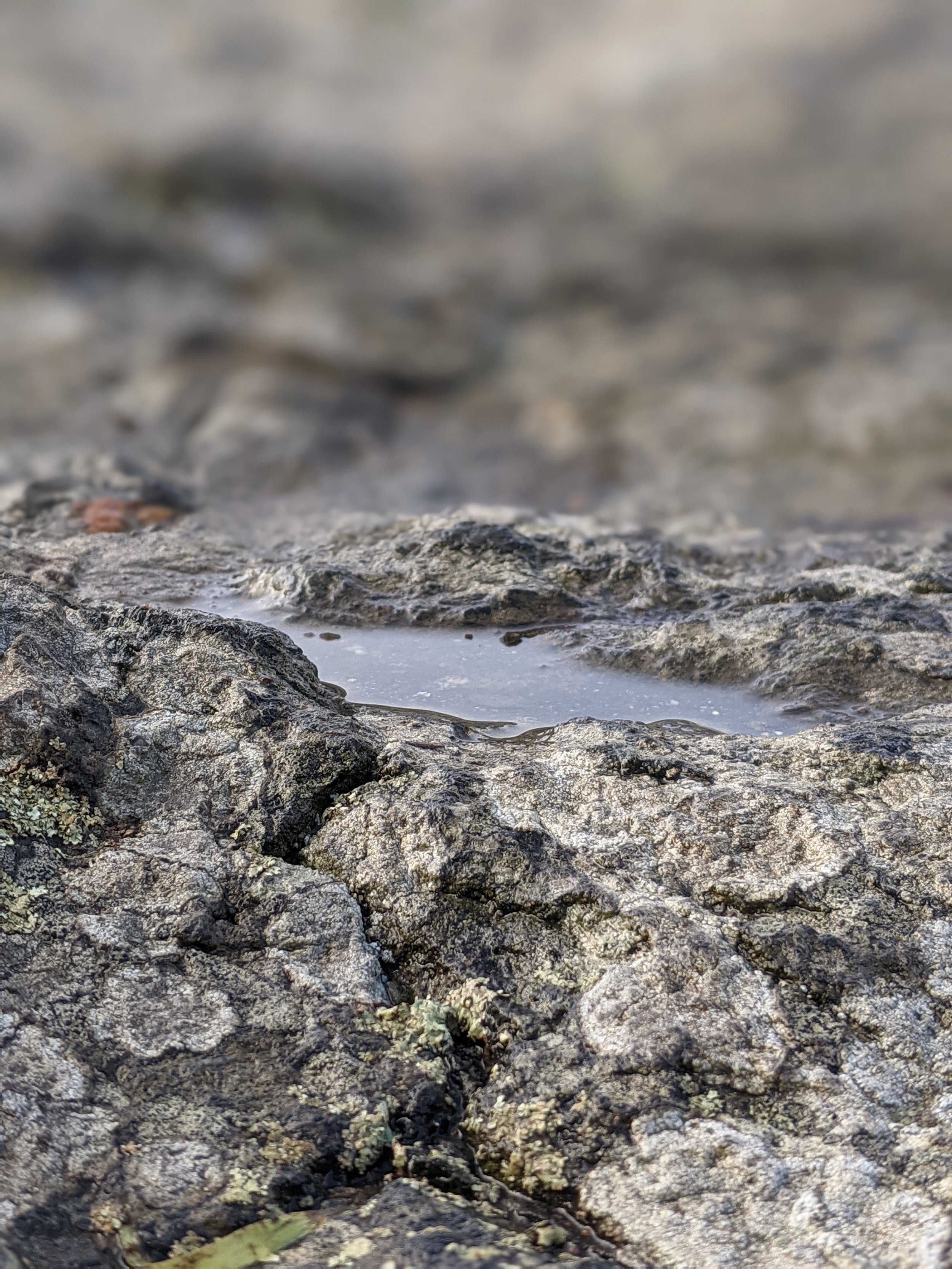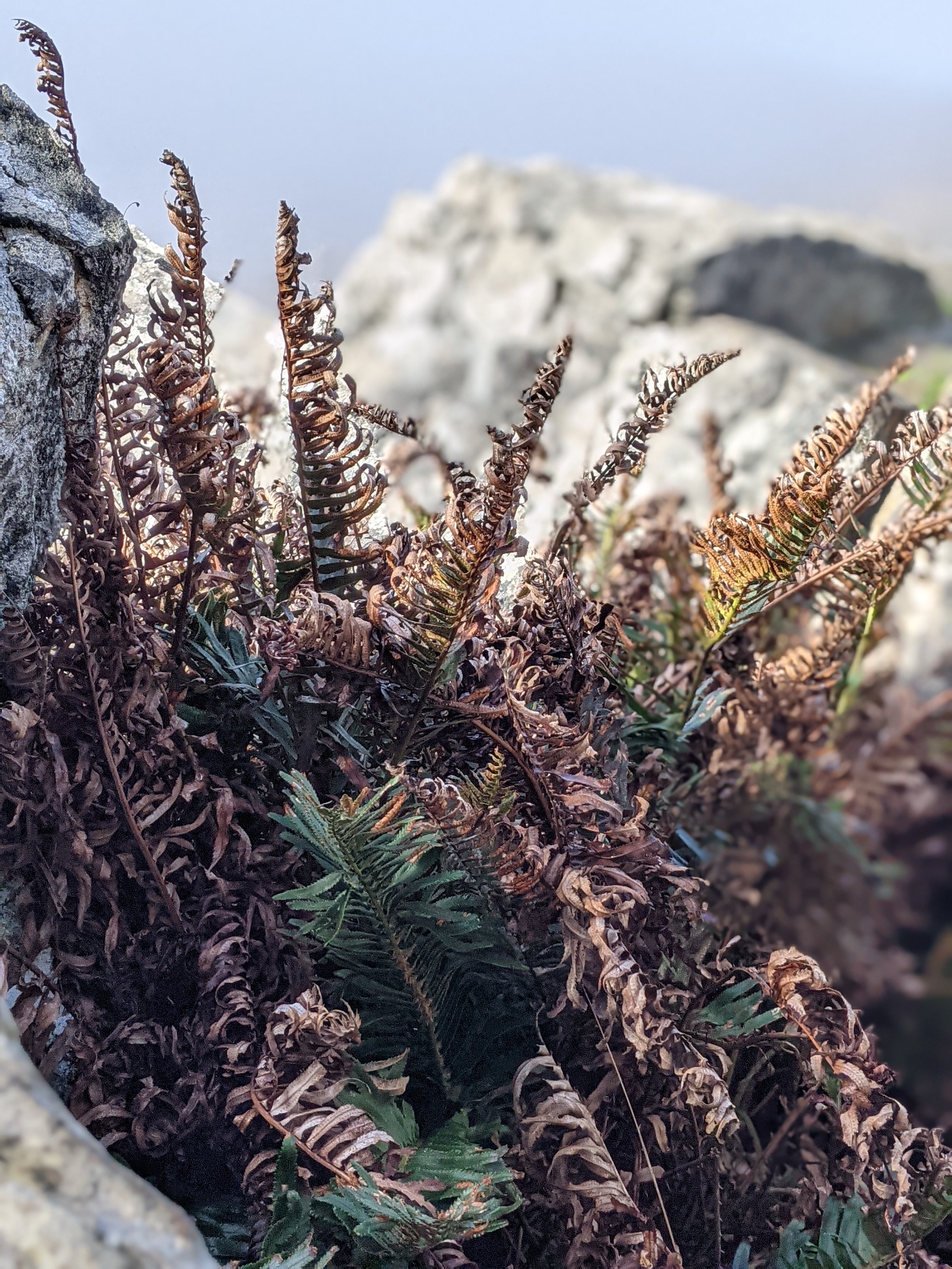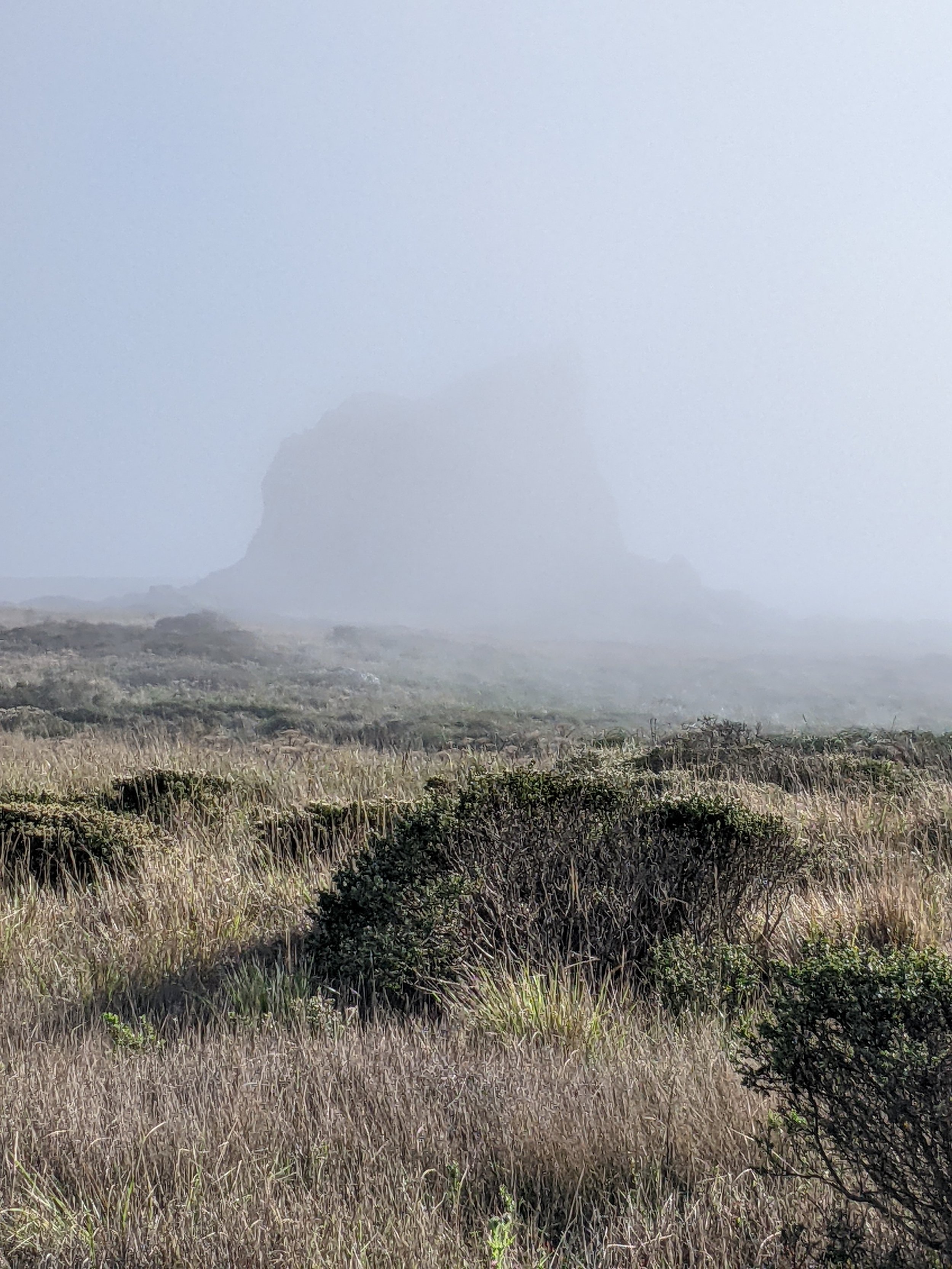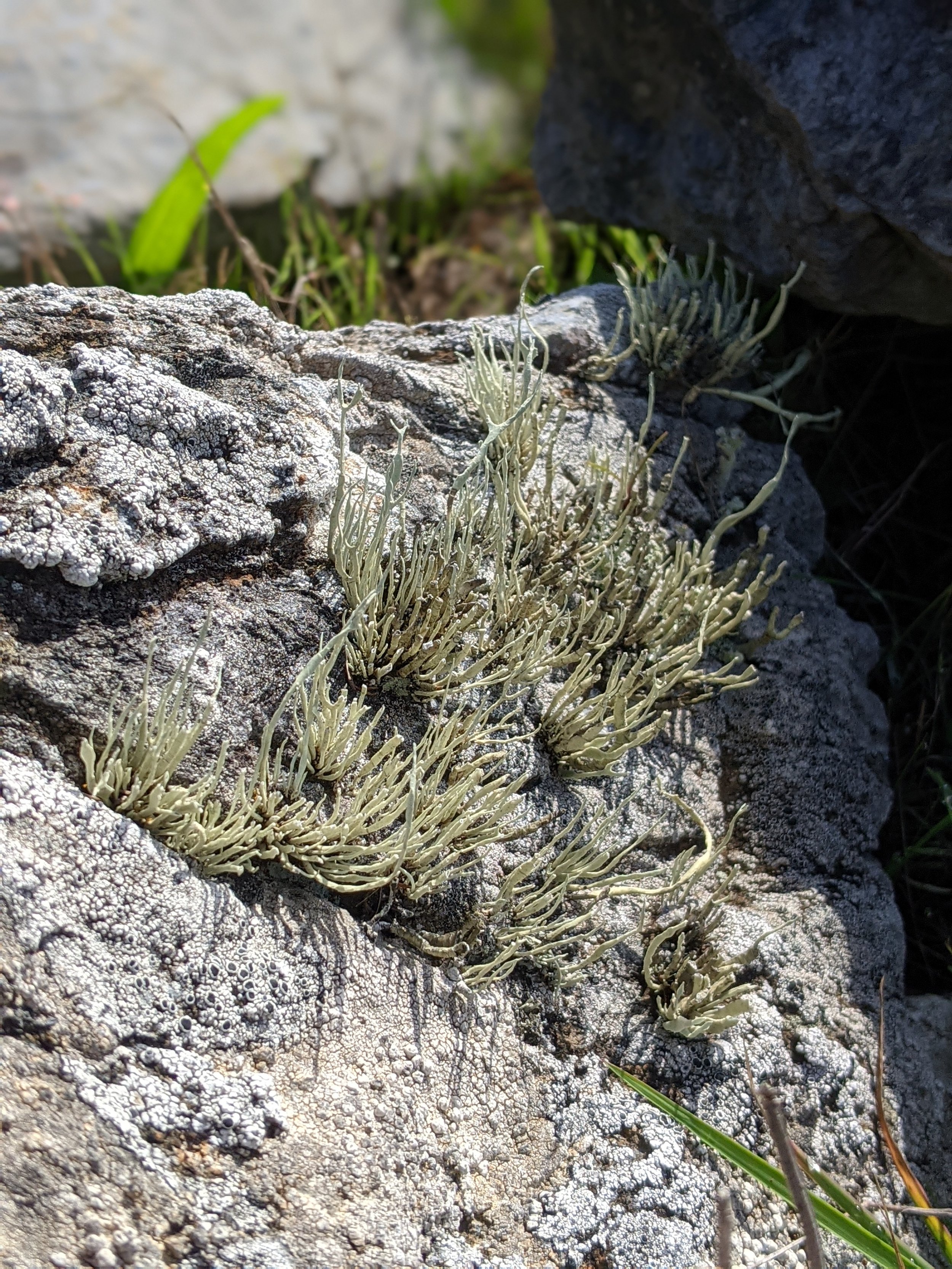A small rocky hill, with one of the sea stacks in the distance.
Millions of years ago, these sea stacks were underwater. Tens of thousands of years ago, mammoths and giant bison came to these tall stones to rub against them for grooming purposes. Today, groups of rock climbers gather here to test their abilities.
They are most commonly known as the Sunset Rocks, or to some researchers as the Mammoth Rocks, because certain sections of them were rubbed to a polish by ancient megafauna. The person who introduced me to this place more than 20 years ago had another name for them, which is still how I think about them privately.
The early peoples of California didn’t build megaliths like the ones we see in the UK and Ireland, but these sea stacks have a similar feeling. As you approach the cluster of towering stones, you’re struck by a similar sense of awe, the feeling of entering a space that is sacred, other. When you find the path and follow it into the clearing between the stones, it feels like you have crossed into another world. The air is often warmer, more still, and the sounds of wind and pounding sea fade away.
It would be difficult to overstate how special this place is.
When I came here regularly 20+ years ago, it was often on weekday evenings around dusk, when we could have the place to ourselves. These days, I live too far away for a casual visit on a weeknight. I keep winding up here on Saturday afternoons, when the stones are covered with climbing enthusiasts.
Fog covering the plain.
During my most recent visit, in mid-November, 2021, I was excited when I arrived, because the whole plain was blanketed with a thick layer of fog. Mists mean the possibility of straying into another world, like the stories about Avalon. But when I reached the stones, I discovered there was some kind of party or event in the clearing. Someone had set up a table with fliers, and I could hear the beep of a credit-card reader, though I didn’t get close enough to find out what they were selling. Laughter and chatter rose up from the stones, which were studded with climbers.
I spent some time visiting the stones scattered around the main three, and on a little rocky hill nearby, enjoying the fog swirling across the landscape. I tried to imagine that perhaps I had wandered into another world, and the chatter from the Sunset Rocks was a gathering of nature spirits, but I wasn’t really convinced. I admit, I was disappointed; I wanted to go into the clearing and meditate with the stones, but that’s difficult to do when there are lively people all around you. I’ve tried.
Reading up later on the climbers who come to Sunset Rocks, I learned that, in general, they climb in a respectful way, using the stones’ own lumps and bumps for hand- and footholds, or placing anchors only in existing chinks in the rocks. Visiting this spot regularly seems to have fostered stewardship among climbers, and I appreciate that other people love and revere the stones, even though they’re in ways that are different from mine. Part of me objects; it would be disrespectful to go bouldering at Stonehenge or Avebury, but that’s not what this place is.
Somehow, I need to find ways to visit this place that aren’t peak climbing times, such as lovely (or even misty) Saturday afternoons. And I hope you get the chance to visit them too. Until then, you can read more about them, and other special Sonoma County sites, in my book “Sacred Sonoma.”

